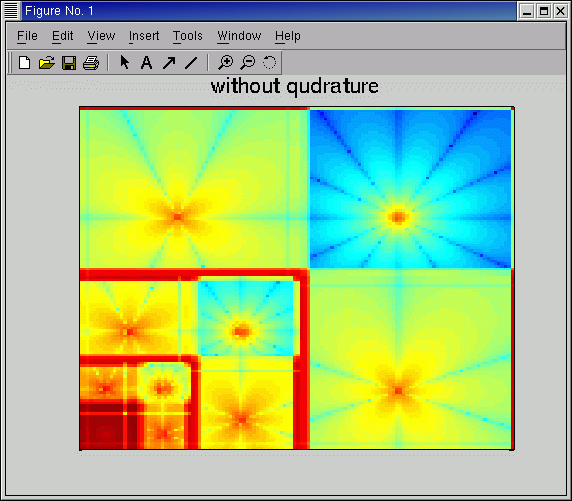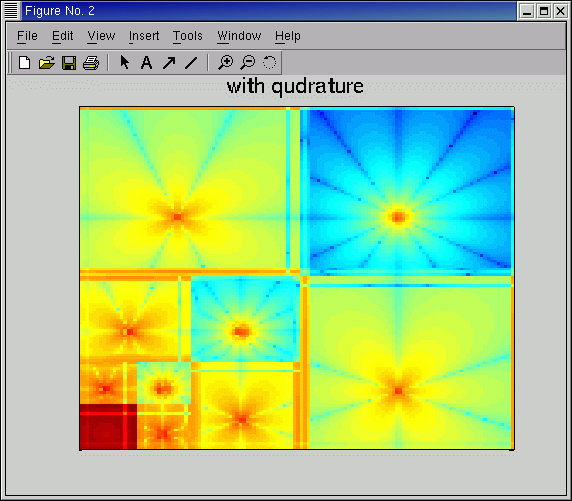 |
|
Next: AdaptiveData Up: Examples Previous: Wavelet Transforms
Wavelet Transform for Orthogonal Daubechies Wavelets
In this example, we want to use orthogonal Daubechies wavelets for the transform.
The point here, is that prior to the actual transform the coefficients with respect to the
scaling function basis must be computed. For Interpolets these coefficients were just the nodal values, this
is no longer the case for Daubechies wavelets. The discrepancy is particularly large near the boundaries.
To show the differences, first just the nodal values are wavelet transformed. In the second part of the code scaling function coefficients are computed from nodal values via a quadrature rule [2]. Then these coefficients are transformed. The source to this example is Sources/Examples/WTDaub.cc. You can compile it by make WTDaub in the Examples directory.
see the code WTDaub.cc
WTDaub.exe produces two files which contain wavelet coefficients.
Visualize the results in MATLAB by (AWFD/Sources/Examples/wtdaub.m)
A=ReadUDF('../../Data/Test/Bd1') ;
B=ReadUDF('../../Data/Test/Bd2') ;
figure(1);
pcolor(log(abs(A.a))) ;shading flat;
set(gca,'ZLim',[-30,2.5]);
set(gca,'FontSize',20);
set(gca,'XTick',[]) ;
set(gca,'YTick',[]) ;
title 'without quadrature'
figure(2);
pcolor(log(abs(B.a))) ;shading flat;
set(gca,'ZLim',[-30,2.5]);
set(gca,'FontSize',20);
set(gca,'XTick',[]) ;
set(gca,'YTick',[]) ;
title 'with quadrature'
You should get the following two figures. The first figure shows the wavelet coefficients when no quadrature has been used. The second figure show sthe coefficients if a quadrature has been used. In the first case, there are large wavelets coefficients even at higher levels. This diminishes the effectivity of e.g. wavelet compression, see [2] for a discussion on this. In the second case, this problem is still present, but much weaker.


Next: AdaptiveData Up: Examples Previous: Wavelet Transforms koster 2003-07-29